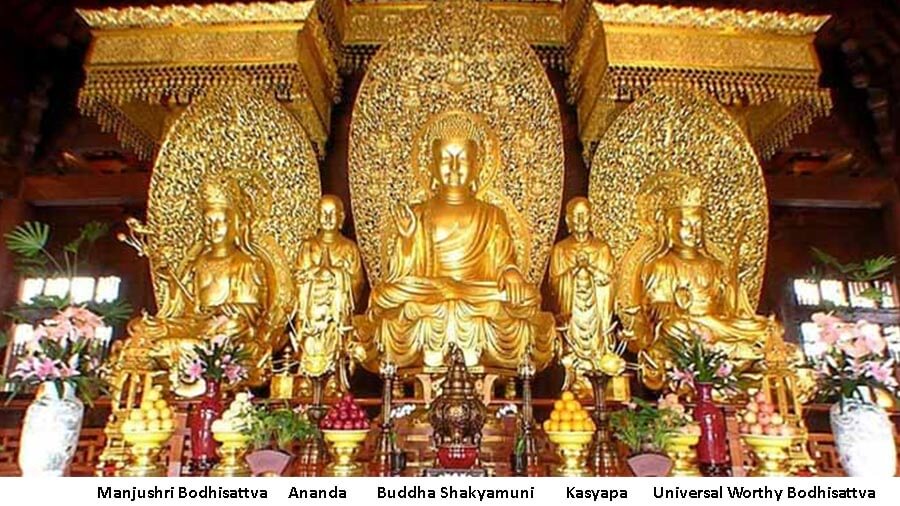by Venerable Master Chin Kung
All Buddhas symbolize our virtuous nature. All Bodhisattvas and Arhats symbolize the virtue of practice. Without the virtue of practice, the innate virtuous nature cannot be revealed. This complementary relationship is why the Buddha Table includes both Buddha and Bodhisattva images. The Buddha represents original nature and the Bodhisattvas represent the application of this nature. This original nature is empty, as it has no set form. All creations or form arise from this original nature and once there is form, there is application. The Buddha represents the original nature and the Bodhisattvas represent form and application. This is why in the Flower Adornment Sutra, the Buddha does not comment on the teachings, for the original nature that is empty has nothing to say. But the Bodhisattvas do have something to say since they apply the principles. Not only is the original nature unexplained but also no thoughts arise from it. The saying that “Whenever I open my mouth I blunder; whenever I have an idea I am wrong” is said in terms of original nature represented by one Buddha. Why are there two Bodhisattvas to represent application? The infinite and innumerable form and application are divided into two categories; wisdom and practice or understanding and behavior. Practice corresponds with understanding. Understanding is the principle and practice is the application.
When we see the image of Buddha Shakyamuni, usually Ananda and Kasyapa, two great Arhats are on either side of him. Buddha Shakyamuni represents our original nature. Ananda, who is foremost in hearing, represents understanding and wisdom. Kasyapa, who is foremost in asceticism, represents practice. We may also see Buddha Vairocana, the wisdom body of Buddha Shakyamuni, with Manjushri Bodhisattva and Universal Worthy Bodhisattva on either side of him. Manjushri Bodhisattva represents understanding. Universal Worthy Bodhisattva represents practice.

